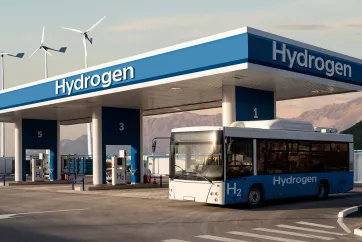
What is Intake-to-Procure? (And How It Streamlines Procurement)
- Lengthy approvals often cause delays in processing procurement requests.
- Intake-to-procure replaces manual tasks with structured workflows to capture, validate and approve requests.
- Automated workflows speed up request approvals and increase transparency and compliance.
April 14, 2025 | Procurement Software
Imagine this: An employee needs a new laptop urgently. The employee's team emails a request to finance, who then loops in procurement. Meanwhile, two employees from another team submit similar requests.
Before you know it, procurement has multiple requests – some approved while others with missing details.
Procurement then sends requests with missing details back to where they came from, and this continues back and forth for a while. There are delays, costs increase, and resources are engaged in unnecessary manual tasks.
How can procurement overcome these challenges and streamline requests?
This is where they need a structured process that can transform chaotic procurement requests into a smooth, controlled workflow.
What is Intake-to-Procure?
Intake-to-Procure is a structured workflow in procurement. It begins when a business unit or stakeholder places a request for goods or services and ends with procurement fulfilling the request.
Consider Intake-to-Procure as the front-end of procurement, spanning from the initial request to purchase order (PO) creation. The key objective in this process is to capture, validate and approve every demand before procurement kicks into action.
The process includes a series of steps businesses follow to identify needs, request purchases and ultimately procure goods or services. This encompasses everything from the initial request for a product or service to the final approval and purchase order issuance.
Common Pain Points
Communication gaps
Different internal teams often have different processes and priorities. This can create misunderstandings about what is needed and why. At times, teams make requests that don’t accurately reflect what’s needed.
Approval delays
Traditional methods involve multiple layers of approval, which slow down the process. The need for cross-functional approvals in some requests also causes delays.
Lack of transparency
Poor visibility into requests leads to confusion. At times, there are multiple requests by different teams, which adds to the confusion.
Data silos
As information is scattered across different systems and functions, it is difficult to track spending and analyze procurement performance.
Inefficient use of resources
In the absence of a structured process, teams spend valuable time on manual tasks, which hampers their productivity.
A well-designed Intake-to-Procure process fixes these pain points by introducing:
- Standardized request forms with clear templates for purchase requests
- Collaboration tools that enable real-time communication between teams
- Automated approval workflows reduce process bottlenecks and speed up decision-making
- Enforced policy compliance with pre-approved suppliers and contracts
- Real-time tracking to check the status of requests
How Does Intake-to-Procure Work
Step 1: Request Intake
A user submits a purchase request via a self-service portal.
Step 2: Validation & Approval
Procurement checks the request on multiple factors.
- Is the request necessary?
- Does it fit the budget?
- Are there any existing contracts for this product?
Once the request is checked, procurement sends it to the right stakeholders for their approval.
Step 3: Purchase Order Creation
Once the request is approved, procurement generates a purchase order—either from an existing supplier contract or through a quick sourcing process.
Step 4: Fulfilment and Delivery
The supplier receives the PO and delivers the goods or services. The requester gets what they need—without bypassing compliance.
How Intake-to-Procure Benefits Procurement
Intake-to-procure solutions provide a structured process to enhance procurement efficiency. Here’s how these solutions benefit procurement.
Streamline operations:
Automated intake-to-procure replaces paper documents and manual processes with digitized documents and workflows. This simplifies tasks like submitting and approving purchase requisitions. Automated workflows accelerate request validation and approval, allowing teams to process requests quickly.
Enhance visibility:
Intake-to-procure solutions provide a clear view of all procurement activities, enabling organizations to track expenditures in real time. Transparency helps identify trends, optimize budgets and manage supplier performance effectively.
Improve compliance:
The structured nature of intake-to-procure process helps businesses comply with procurement regulations and internal policies. Teams can vet requests against predefined criteria to mitigate compliance risks and ensure that only necessary purchases are made. This proactive approach prevents overspending and aligns procurement with strategic business goals.
Boost savings:
With systematic evaluation and competitive bidding, intake-to-procure process helps organizations achieve significant cost savings. They can leverage data analytics to monitor spending patterns, negotiate better pricing, and capitalize on bulk purchasing opportunities.
Take the Next Step
• Explore GEP’s Intake Management Solution:
Learn how GEP’s AI-powered procurement software automates intake-to-procure processes.
• Get the latest insights:
Download our bulletin How AI-Driven Intake Management Can Deliver Next-Level User Experience, Efficiency and Compliance
See how automation can simplify procurement request management for your business.



